Meeting the poor in backwater Guizhou, China in 2011
(Travel Story Series @ Hon Too Fang 2021)
(Warning in 2021: this story is about visiting a very poor region in China, mostly looking at poor villages. Nothing spectacular. May be this story is suitable for only travel enthusiasts, not for average travellers. You may opt out now if you are looking forward to seeing famous tourist spots or world heritage sites)
GUIZHOU – Another glimpse of China
In April 2011, my wife and I joined 18 others, mostly seniors, on a 2-week tour to the province of Guizhou 贵州 in China. This is a serious factual report.
The poor, undeveloped Guizhou
Guizhou is a mountainous, poor and landlocked province in southwest China, with a population of about 34 million. It is poor and undeveloped, due mostly to the lack of flat land, lack of infrastructure and far from the prosperous provinces in the eastern coast of the country. Per capital GDP is only about 20 to 25% of that of Shanghai. Agriculture is still the main industry. Others are forestry, mining and energy. The capital and largest city is Guiyang 贵阳located at the centre of the province.
The people and a Dong country
Guizhou is one of the most diverse provinces in China in terms of its demography. Near to 40% of its people are from the minority tribes. The main ones are the Miao 苗族 and the Dong 侗族. 3 of the 9 prefectures in the province are accorded autonomous status for the minorities. All 3 are located in the south.
The Miao are a group of linguistically-related peoples living in Southern China and Southeast Asia. It is recognized by the government of China as one of the 56 official ethnic groups. It includes many sub groups, like the Hmong people in Southeast Asia. There are some 9+ million Miao people in China, the 5th largest ethnic group. About 50% of them live in Guizhou.
The Dong people are the 12th largest ethnic group in China, with some 2.8 million people. About 60% of them live in Guizhou, so Guizhou is a Dong country. The Dong language has similarity with those of the Thai and Laos.
Both the Miao and Dong people do not have a written language but only spoken dialects. Religion wise they practise folk religion, worshipping local spirits and deified historic people or ancestors.
The Dong country is a honk country
The rural roads here are rather narrow, and at every bend and corner the bus driver had to honk to announce to oncoming traffic the herald of the bus. The Dong country is a honk country. It was such an unusual experience when the modulated soft voice of Teresa Teng on DVD permeating in the bus was frequently interrupted by the sharp honks. The driver is not rude by honking. In fact the road signs mandate him to honk.
Miao/Dong Architecture: Drum Towers 鼓楼
Drum Towers are pyramidal timber buildings several floors high where structural members are joined without using metal nails. The number of floors is an odd number, typically 5, 7, 9 or more. The building could be a square, 6-sided or 8-sided. Every village has at least one such tower located at the centre, where the villagers could hold meetings and activities. Like a traditional community hall, a symbol of unity. Shown one at the Dong village of Tang’an 堂安侗寨, 1st photo shot in sepia.
Miao/Dong Architecture: Wind and Rain Bridge 风雨桥
The Miao/Dong have another traditional structure: the Wind and Rain Bridge. The bridge over a wider river is decorated with pavilions or small drum towers, with rows of chairs for people to take a rest, a shelter for wind and rain. It is also a venue to welcome guests to the village. The whole bridge is constructed with timber without the use of metal nails. Shown one at the Dong village of Dimen 地扪侗寨, with details of one of the 3 pavilions.
The F1 circuit
The UBS China F1 race for 2011 took place on 17th April. We left for China on the same day and continued our F1 race in Guizhou. How? We travelled in a mid-size bus on narrow country roads meandering around the hills, with S-bends and U-bends. As thrilling as the real F1 races.
We had our unscheduled pit stops too, oh no, typo error, should be piss stops. Just stop and piss by the roadside, gentlemen to the front, ladies to the back. After the piss you are at peace. Then a question arises: pissing in the wild, are we still gentlemen and ladies? The positive is that we are in fact greening the World; more trees grow up well with the unexpected fertiliser.
Do that by the roadside? No other people or vehicles on the road? Not many really, but you still need to go off road to the bushes to fertilise your trees, not by the side of the road of course. Good practice to carry an umbrella though, for the ladies.
China: the fake and cheat country (1)
Back home we have read too much news about fakes in China. Everything could be fake. And every tourist is cheated or slaughtered. While in Guizhou I read in the local news about several groups of people jailed for illegal use of cancer-causing food additives, and another cheated on weight in selling some expensive medicine to the tourists, etc. We should not say the Chinese government condone the "fakers".
China: the fake and cheat country (2)
One evening when we were in the city of Anshun 安顺we saw an old lady lying on a thin mattress on the flat part of a very wide pedestrian bridge above a roundabout, covered with a thick blanket with her son (in the 30s) kneeling beside her, begging. Then a police officer appeared and spoke to the man. The old lady sprang up like a gymnast on a trampoline and both of them collected their stuff and hurriedly walked off. But 2 hours later we saw the same tag team in another street plying the same trick. Not even sure if they are mother and son.
This is the fake “Nike” in Guizhou. Or would you consider it a fake? It sells shoes!
(Note in 2021: The government has lifted so many millions of the rural folks out of poverty. I believe such a situation is unlikely to be happening today).
China: the fake and cheat country (3)
Tourists in China sometimes got cheated by traders who substituted a 100 Yuan note with a 100 Taiwanese Dollar note, about the same colour and size and similar Chinese wording, but worth only 20% of the Yuan. A hawker tried that on me the 1st time we visited China, in 1994, on the Beijing-Tianjin-Chengde route. But she was not successful.
In this Guizhou group one lady was fooled this way, but not in China. She was fooled by a money changer in Penang. Within the bundle of 100 Yuan notes she got from the money changer were 5 pieces of 100 Taiwanese Dollar notes. The same trick has gone global! She came to know only when she was about to use the money while in Guizhou.
Footnote: after returning from China she went back to the money changer and changed the Taiwanese Dollar back to Yuan. No argument. The money changer just said it was a genuine mistake. But could you believe a money changer would make such a mistake? Has anybody changing 3 million Indonesian Rupees were given 3 million Australian Dollars instead?
Food: oily and salty
Ordinary Chinese cooking in the interior of the country is always oily and salty. Food is on our own on this trip and we used to eat in small shops. The shop boss is always captain cum waiter cum chef cum rubbish collector cum cashier! The 4 words that we would always use when ordering were 少油少盐 or “less oil, less salt”. The food came and could still be too oily and salty for us.
Our Penang Lam said he knew the reason. He said these Guizhou people were very grateful of our visit to stimulate their economy, as not many people come here, so they tried to reciprocate to stimulate the Malaysian economy by consuming more oil, more palm oil imported from Malaysia. A Chinese fake?
Not to be outdone by a fellow Penangite, our Penang Lim said these Guizhou people were very thoughtful though a bit poor in geography. They thought Malaysia is close to Japan geographically and we might have been contaminated by the radioactive fallout from the failed Fukushima nuclear power plant. And plenty of salt can help in this case. Another fake?
Shown hawker food in Guiyang 贵阳, the capital. Eating on long tables is a Miao tradition.
Internet Service
In smaller towns, there was no internet service in the hotels. We need to go to internet cafes for that service to communicate with the World. But generally foreigners were not allowed to patronise their internet cafés. You need to use the local identity card for registration to use the service. Sometimes, the café boss might use his card to log in for you though. In bigger towns, we do have limited internet service access in the hotel.
(Note in 2021: no smart phone then. Hotels in bigger towns provide PCs in the lobby for guests’ use. No internet service or wifi in the rooms. You need internet access for some email communication and latest news)
This tourist trying to get on the net, but failed. 您上网了吗?
Electricity and Satellite TV
One thing I always notice and admire in China is that the rural houses always have electricity supply, even isolated houses far away from the roads and villages. I could recall I spent many years of my childhood without electricity on a house on a hill in Penang. And satellite dishes are common features in these rural areas. I believe content must be heavily censored by the one-party government.

Inspiring Story (1): Life Starts at 60
Many of the readers here are senior citizens, retired. The most senior member in the tour group is one Mr Ho who has well travelled. He completed a degree in law when he was over 60, called to the bar at the young age of 65 and now practising law. If that is not amazing enough he enrolled for a Masters of Law course in a local university and graduated at the slightly older age of 69, last year. The dean of the law faculty called him respectfully as “Uncle Ho”. A most inspiring person.
Inspiring Story (2): Just Do It
When we first boarded our midi tour bus, we noticed a rather big pail on the bus, too big for rubbish. The bus driver said it was for emergency, without explaining anything. We laughed it off. Then on a day where the road was too winding and narrow to have a piss stop, a fellow member took it to the back of the bus to answer nature’s call. No joke. You can’t go against nature, like earthquake, tsunami, etc. When nature calls, you better answer. Nothing embarrassing. Just Do It. A most inspiring action. I heard Nike is now looking for this lady to endorse their products.
Discount for senior citizens
In China the entrance fees for tourist attractions are very expensive. Some places do offer discounts to seniors but there is no uniform rule. At this place called Maling Gorge, after descending to the valley floor and touring the place we could get out from the gorge by either taking the special lift (need to pay) or walk another 20 minutes or so, a steep climb though. Our 70-year old Mr Ho decided to take the lift. A 50% discount was allowed but he was required to get his age-status confirmed at another counter. He had to walk down 3 basement floors of the small building to get his status endorsed. When he walked up the 3 floors to the ticketing counter, panting, he asked “Is this the penalty for getting 50% discount?” The lift at Maling Gorge.
What to see in Guizhou?
Now we go touring, according to our tour itinerary
Sisters’ Meal Festival at Shidong 施洞的姐妹节
The Sisters' Meal Festival is a Miao festival on love, like a Valentine Day.
Shidong 施洞is located at the Taijiang County 台江县in the Qiandongnan Miao and Dong Autonomous Prefecture 黔东南苗族侗族自治州. It is about 70 km east of the city of Kaili 凯里, the location as shown in the map.
The festival held in Shidong is the largest and most representative, held every year from 15th to 17th of the 3rd lunar month. We came here on the morning of the 15th, and stayed in the activity centre for the morning. Unfortunately our scheduling was poor. The official festive programs did not start until the afternoon. What we saw in the morning was just a show of Miao women's traditional costume and headwear reserved for such occasions. The silver headgear is particularly splendid.
Waiting for festivities to start: drums and performers, Valentine-day-lookalike flowers for the occasion and the balloon man finds shade under his own merchandise.
The old town of Zhenyuan 镇远古镇
An old town on a plateau in the Qiandongnan Prefecture 黔东南州to the east of the province, near to the main city of Kaili 凯里in the prefecture. It is voted as one of the 10 most beautiful old towns in China. About 50 of the old buildings along the Wuyang River 舞阳河are dated to the Ming Dynasty or over 300 years old. The main Zhusheng Bridge 祝圣桥 was completed more than 600 years ago.
We had an outing to a nature park along the Wuyang River 舞阳河on a misty morning, park cruise, part hike. Shown scenes along the Wuyang River. Funny bunches of (?)
Hiking in Xijiang西江
Xijiang 西江is a township within the Leishan County 雷山县in the Qiandongnan Prefecture 黔东南州. We had a 3+ hour morning hike over several low hills in the area. Just to look at some hill farms and see how the people live there. They are mostly from the Miao ethnic group.
One Miao village we passed by is named Maliao 麻料famous for its silversmith works. It has about 150 households, at elevation around 900 – 950 m above sea level. Shown the community hall for this village, 1st photo. And rice fields and rapeseed oil fields. The white-flower rapeseed plant is the improved variety from the original yellow-flower plants.
The villagers are mostly very friendly. They are Miao people. I believe there are very few “foreign” tourists here. The uncle below is repairing plastic pails, quite unheard of in Malaysia or at least in the Klang Valley.
Xijiang Qianhu Miao Village 西江千户苗寨
This thousand-household Miao village in Xijiang 西江is the largest Miao village in China, with about 1,400 households. It is set in a river basin with daily cultural performance for tourists.
First a photo shot of the village from a high point on the access road, on a hazy early afternoon. The open space at the centre is the venue for the cultural performances. We were welcome at the Wind and Rain Bridge.
Shown deco of 2 shops for tourists, a café and a shop selling local farm produce.
The show attracted photographers with long zooms as well as a local shooting in firm kungfu pose. And sharing the result of new modern technology with his aged subjects.

Xinqiao Miao Village 新桥苗寨
Xinqiao 新桥is a small Miao village within the Datang 大塘township in the Leishan County 雷山县, still in the same Prefecture of Qiandongnan 黔东南州. A small village famous for its method of grain storage. The granary here is built over a pond with several feet of water. This kind of granary has the major advantages of reduced fire hazard and rodent attack, a wisdom accumulated over centuries. Shown the entrance arch to the community of some 150 households and the granary buildings over the pond. The house of this auntie is certainly under provided. Really a poor village.
Congjiang Drum Tower 从江鼓楼
From Leishan Country 雷山县we went east to Congjiang County 从江县, still in the same Prefecture of Qiandongnan 黔东南州 to look at the Congjiang Drum Tower, the tallest Dong drum tower in China. It has 27 stories, constructed with timber (local fir) without any metal nails. It is not located in a village but near a highway stop, constructed as a show tower. There are walls in the compound with bas relief of the Dong people.
Basha Miao Village 岜沙苗寨
Our next stop is Basha Miao Village, still in the Congjiang County 从江县. Basha is a village with some 460 households. It claims to be one of the “secluded” villages still maintaining their traditional Miao culture, traditions and practices. But of course this is just touristic advertisement. It has a blooming tourism industry and we watched performances meant for the tourists.
First you were greeted with a 21 gun salute at the entrance, with individual performance too, for a tip of course. Then some folk dance routines. The highlight is shaving one’s head with a big sickle. The master is really skilful as it was done very fast. With 3 shows a day, we have to wonder would there be enough men or boys for the job. And look like everybody here smokes, the hookah or water pipe type, shown a young smoker.
Zhaoxing 肇兴
Zhaoxing 肇兴is a town in Liping County 黎平县, still in the Prefecture of Qiandongnan 黔东南州. We stayed a night at the Zhaoxing Hotel 肇兴宾馆, said to be the best in this town with some 23,000 people. Shown scenes of the town. This is Dong territory.
In the evening we witnessed a real funeral ritual, like a wake service, at the drum tower, concluded with the firing of fire crackers. This is real stuff, not performed for the tourists.
Tang’an Dong Village 堂安侗寨
Near to Zhaoxing 肇兴is this Tang’an Dong Village 堂安侗寨, famous for its terraced rice fields. We had a brief stop here.
Liping County 黎平县
We are now at the town centre of Liping County 黎平县. Walked around the historic street called Dongmen Jie 东门街where many of the buildings are dated to the Ming and Qing Dynasty, or up to 400 years old. This is the only street in Guizhou included in a listing of national historic streets.
At a local market in the county. See unfamiliar merchandise being sold. The 1st photo shows display of herbal medicine, some are exotic animal parts.
Dimen Dong Village 地扪侗寨
Another big Dong village within the Liping County 黎平县 with about 540 households. See the centrally located drum tower. Having a coffin and park it beside your house is to ensure you will be properly buried when you go.
Shiqiao Miao Village 石桥苗寨
Shiqiao 石桥is located in the Danzhai County 丹寨县, at the western part of the Prefecture of Qiandongnan 黔东南州. It is famous for producing hand-made paper, a long time tradition. We of course watched a demonstration in the art of paper making, 1st photo. And as expected the hand-made papers are very expensive. Shown also bacons being air-dried, learn how to sharpen a sickle from grandma, and a woman at work, 2 men watching.
A peculiar thing here is most of the houses are heavily decorated with the traditional red paper scripted with couplets. May be something to do with the paper they produce. And a lot of corns being dried, not seen in any other villages visited on this trip.
Rongjiang County Center榕江县城
Had a short stop at the town center of Rongjiang County and visited a small county museum on the culture of the Miao people.
Tianlong Tunbao 天龙屯堡
For the last 8 or 9 days, we were touring areas within the Prefecture of Qiandobgnan 黔东南州, dominated by the Miao and Dong people. We have now moved to areas within and around Anshun City 安顺市, with more Han Chinese.
First to Tianlong Tunbao 天龙屯堡, located at a suburb of Anshun City called Pingba 平坝区. The word “tunbao” loosely means a “fortified living quarter”. The place was on an ancient trading route. During the early Ming Dynasty or about 600 years ago, it was developed as a living fortress with soldiers and their families migrated mostly from central China. They were essentially Han people and gradually this place has a Han culture very much different from neighbouring areas which have minority ethnic groups. The outpost was abolished about 200 years ago but of course the former soldiers and their families continued to stay here as civilians.
The old fortress is on highland with karstic formation, offers a panoramic view of the surrounding. There are a few old structures there, shown a temple for the God of Fortune.
Dixi Opera 地戏
The nuo opera 傩戏 is a type of popular Chinese operas characterized by ferocious masks, unique dresses and adornments and the use of strange languages. It is tied to ancient religious performance. It is listed as a national intangible cultural heritage. The type popular in Anshun City 安顺市 is called the Dixi Opera 地戏. We watch a show in town. The story is taken from an incidence in the classic “Romance of the 3 Kingdoms”.
Note that the mask is not worn over the face, but over the forehead.
Huangguoshu Waterfall 黄果树瀑布
This is one of the largest waterfalls in China located on the Baishui River 白水河 in the Zhenning County 镇宁县in the City of Anshun安顺. The main fall is 67 m high and 83 m wide. The 4th photo shows a side fall called Yinlianzhuitan Waterfall 银链坠潭瀑布. There is a park beside the waterfall. The Huangguoshu Waterfall is part of the greater Huangguoshu Scenic Area 黄果树风景名胜区.
Tianxingqiao Scenic Area 天星桥景区
This scenic area is part of the Huangguoshu Scenic Area 黄果树风景名胜区. It features various grotesque limestone karstic formations, caves, waterfalls, lakes, forests, etc. The name, Tianxingqiao, meaning “sky-star bridge” is due to the rock formation shown in the 1st photo. We spent a few hours here.
Forest of Ten-Thousand Peaks at Xingji 兴义万峰林
This is an area of limestone karstic formation dotted with thousands of peaks, just outside the city of Xingyi 兴义, the capital of the Prefecture of Qianxinan 黔西南州. We were at the fringe of the area on a hazy afternoon where no clear shots of the conical peaks in the distance was possible.
Maling Gorge 马岭峡
This is a gorge on the Yunnan-Guizhou Plateau 云贵高原cut by the Maling River 马岭河located at the suburb of the city of Xingyi 兴义. The gorge is 75 km long, 50-100 m wide and 120-280 m deep. Only part of the gorge is open to the public. We spent a few hours at the section called Tianxing Gallery 天星画廊, about 2 km long. Shown are scenes on both sides of the river. It was dry season at the time of our visit.
The most peculiar landscape in this karst formation is something called calcified waterfalls. The river water here contains a lot of calcium carbonate. The calcium carbonate minerals when splashed onto the rock face would accumulate over the years to form into sheets and appeared like solid miniature waterfalls. Hence they are called calcified waterfalls, 1st photo. The next photo is a close-up of the side of a protruding slope, intentionally under-exposed. The slope profile greatly resembles the silhouette of an old man. Actual shot, no Photoshop manipulation.
Conclusion: Some happy faces
The old - why you want to photograph we old people? We are retired too, same as you!
The Young - Why your head has no hair? Same as mine!
Am I cool? Without shirt, sure cool lah.
I have an exam tomorrow you know! Have to do my homework at the bus stop.
Star of the Tour
Presenting here the photo of a beautiful store-keeper cum babysitter in Dimen Village. She is of the Dong minority, just 11 years old. She was the darling of our tour group and everybody bought something from her store as a show of support. We were relieved to learn that she was still studying. In fact the school was just next door.
What would the Malaysian 11-years old do? Wants only i-Phone and i-Pad but not i-ron!
The tour promoter
This tour is promoted by YonGo Travels at http://www.yongo.biz. Tour led by Rachel.
(Note on photography: all photos are mine. My digital Canon SLR had some lens problems during the trip. About two-thirds of the photos here were in fact taken by my spare camera, a small simple point-n-shoot digital Canon. Resolutions may not be that good)
Thank you for reading.
*************************
(Note in 2021: Guizhou was certainly a very poor region in 2011. That was what we experienced then. How is the situation now?
The province is poor mainly due to its geography. It has less than 10% flat land. As an agricultural community, people are forced to live on hilly regions and transportation become problematic. Roads are too expensive to construct. Without road infrastructure whatever one produced from the land could not reach the market in time and economically. Productivity is poor.
The government has undertaken various steps to improve the job situation and living condition and to bring the villagers out of poverty. And the last resort is relocation where the original village is found economically unsustainable. It is reported that 1.88 million people have been relocated from 2012 to 2019, the highest number for a province in China. Within the same period some 8 million people were lifted out of poverty.
From 2010 to 2019 their GDP growth rate averages more than 12% a year. For most of the years within the period their growth rate ranks the highest in the country.
I am sure the pitiful conditions we saw in 2011 would not be seen in Guizhou today.)
(First written in the email format in August 2011. Heavily revised to this PDF format in May 2021)












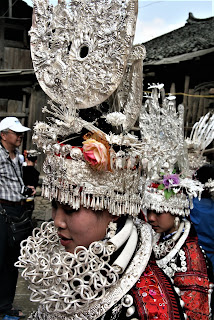

















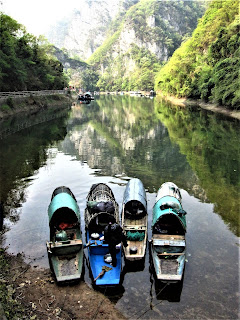




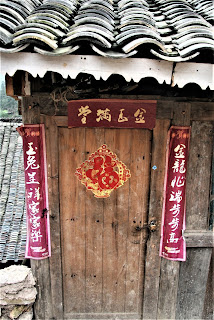



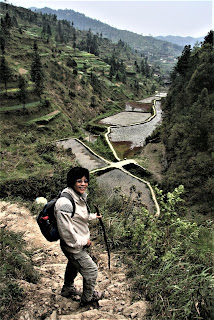

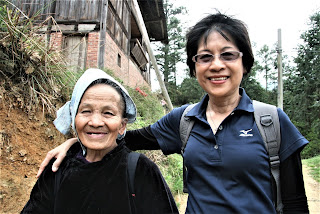

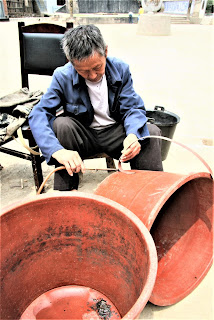

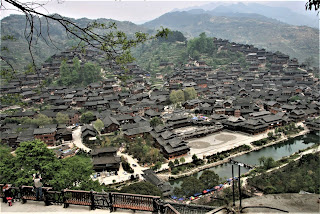





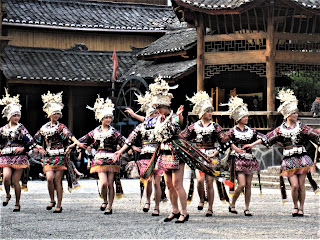
















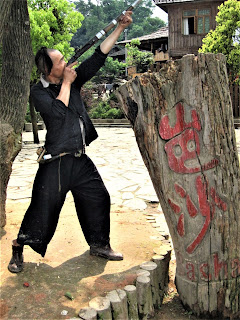





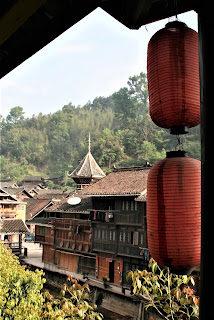









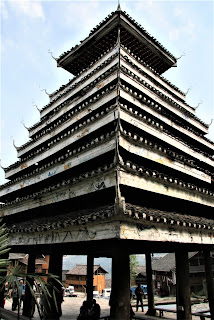










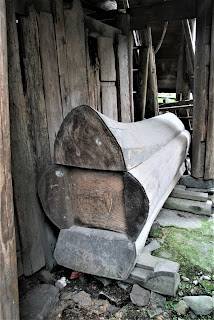





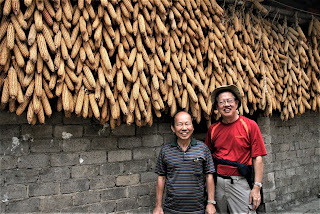




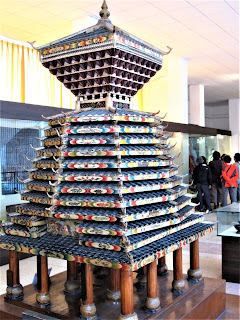












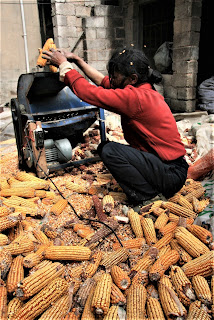













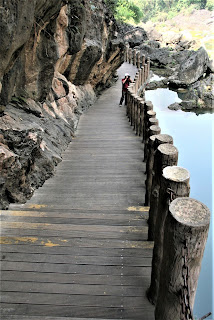



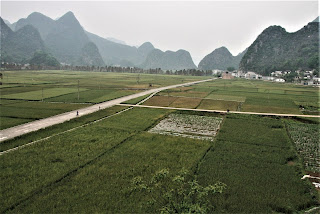









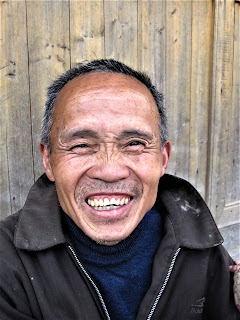




No comments:
Post a Comment